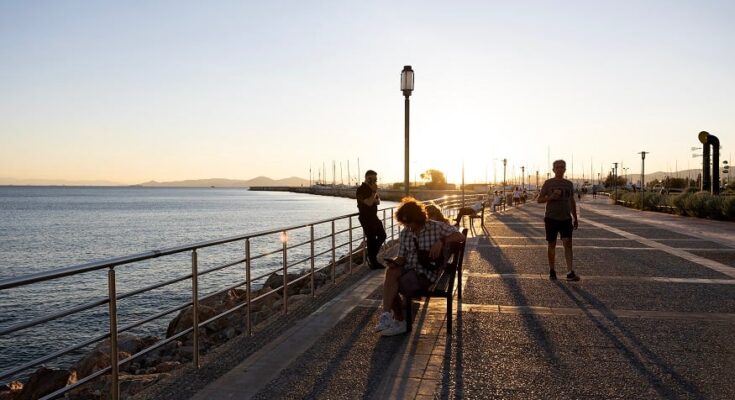The Greek Prime Minister on Monday signed the construction deal for a twelve-kilometre-long cycle route and sidewalk to connect the Athens Riviera from Piraeus to Vouliagmeni.
The sustainable mobility project, whose planning was first announced in 2021, is expected to be completed by the end of 2025.
“How is it possible to have this amazing Athens Riviera, this unique waterfront, and not have a way for a cyclist or a pedestrian to get from one end to the other?” Prime Minister Mitsotakis told the signing event in Alimos.
Passing through six municipalities of Athens – Kallithea, Palaio Faliro, Alimos, Elliniko, Glyfada, and Vouliagmeni – the cycle route and sidewalk is funded by the European Union’s Recovery Fund, and the project executed by the prefecture of Attica.
An additional 6 kilometers will be added to the project through smaller developments executed by the municipalities.
Athens Riviera cycle route a challenging project
From initial planning to the launch of construction works, the “Athenian Riviera” cycle route and sidewalk project has been a challenging one, since it required intensive collaboration between the six municipalities that it passes through, and other competent state authorities, the Greek Prime Minister said.
As the Athens Riviera waterfront is flourishing in building development and investment initiatives, spearheaded by the Hellinikon project, it is vital that the quality of life of the residents of these areas is promoted and not negatively affected.
“In cooperation with all the municipalities, we want to be sure that the development caused by the Athenian Riviera [building projects] is a development that will not be at the expense of the residents of the area and that all accompanying and supporting projects will contribute to the overall promotion of the coastal front, for the benefit of all citizens and primarily the permanent residents of coastal municipalities,” Mitsotakis observed.
Sustainable mobility gains ground in Greek cities
While the Greek Premier called on mayors to be “bolder on their own sustainable mobility planning” to bettee accommodate pedestrians and cyclists, Athens is also focusing on more eco-friendly public transport.
250 new electric city buses are already integrated in the fleets of Athens and Thessaloniki, and 900 more are expected for Attica by the end of 2025.
The goal is not only to replace the old buses with new, eco-friendly ones, with disabled access and modern anti-pollution technology, “but also to increase the frequency of bus routes, so that public transport is indeed a attractive alternative for taking the car. The fastest way to implement this policy starts with the upgrade of the bus fleet,” Mitsotakis concluded.



